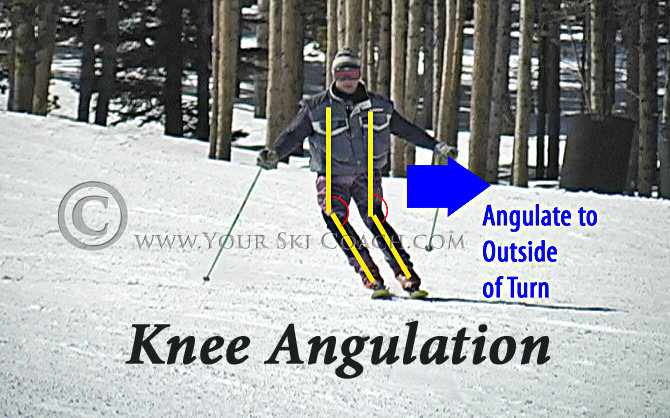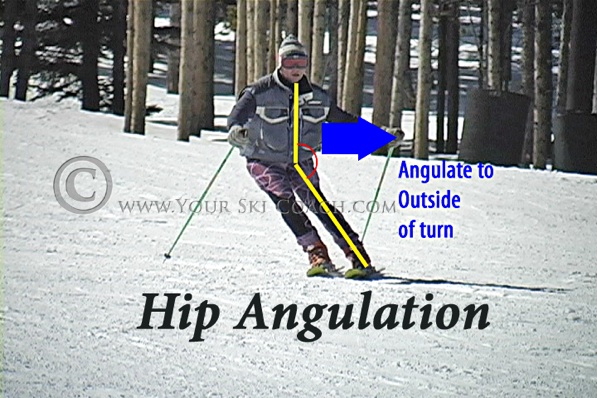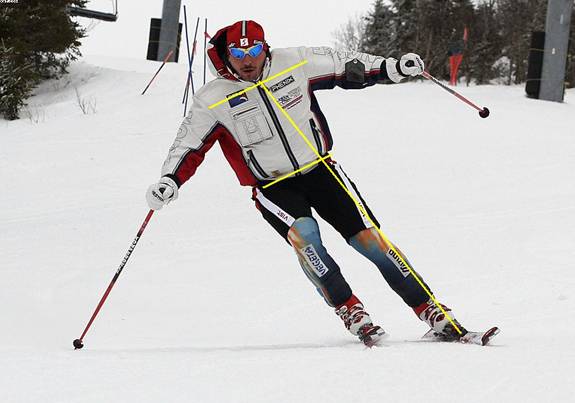1. I start tipping as a continuation of the release, so that's right in the initiation. Leading with the new inside foot, with the object of getting simultaneous tipping of both feet. It might be more inside foot dominant in moguls, if I'm succeeding in being dynamic.1. When/where in the turn do folk tip their respective feet?
2. The immediate effect of tipping is to create what's commonly called knee angulation. Allowing the action to move up the chain results in hip angulation, although that also requires deliberate action of the muscles surrounding the hip joints. I want to maintain the muscular tension from foot tipping no matter what, but the amount of knee angulation that I want to create, and the mix between knee and hip angulation, likely changes depending on the style of turn I want to create. High energy GS turns would need more hip angulation, due to the strong posture needed to balance against the strong forces generated. If making race type slalom turns, I want the quick changes to edge angle I can get from relying heavily on knee angulation.2. How fast/hard/far do they tip?
I've been finding that carrying knee angulation too far can block the ability to achieve a high degree of upper-lower body (rotational) separation. So that's a reason to limit it. Also, in most situations free skiing, I probably want to have some range of knee angulation held in reserve, so as to have it available for making fine adjustments, and for increasing angulation in the finishing phase, to set up a dynamic release into the next turn.
Two days ago, I was in a training session, in which at one point the trainer set a task of suddenly increasing foot tipping mid-turn. The effect of this can be powerful. It was interesting to see that a number of the participants, otherwise pretty good skiers, had quite a hard time doing this, a good indication of how many skiers have poorly developed foot tipping control, and probably poorly developed mobility in the subtalar joints.
3. The answer to this depends on how you define foot tipping, which may be ambiguous. The foot can't actually move far at all inside a stiff boot. The foot can, however, change shape when bearing weight, putting it into a more anatomically advantageous form for transmitting forces between the skier's body and the snow. This amount of movement, too, quickly maxes out. But the application of those forces can be used to create varying amounts of knee angulation. So again, I would seek to maintain the tipping inside the boots to facilitate creating angulation, throughout all phases of the turn until it comes time to release the edges.3. How long do they continue tipping (or hold it at some set level)?






